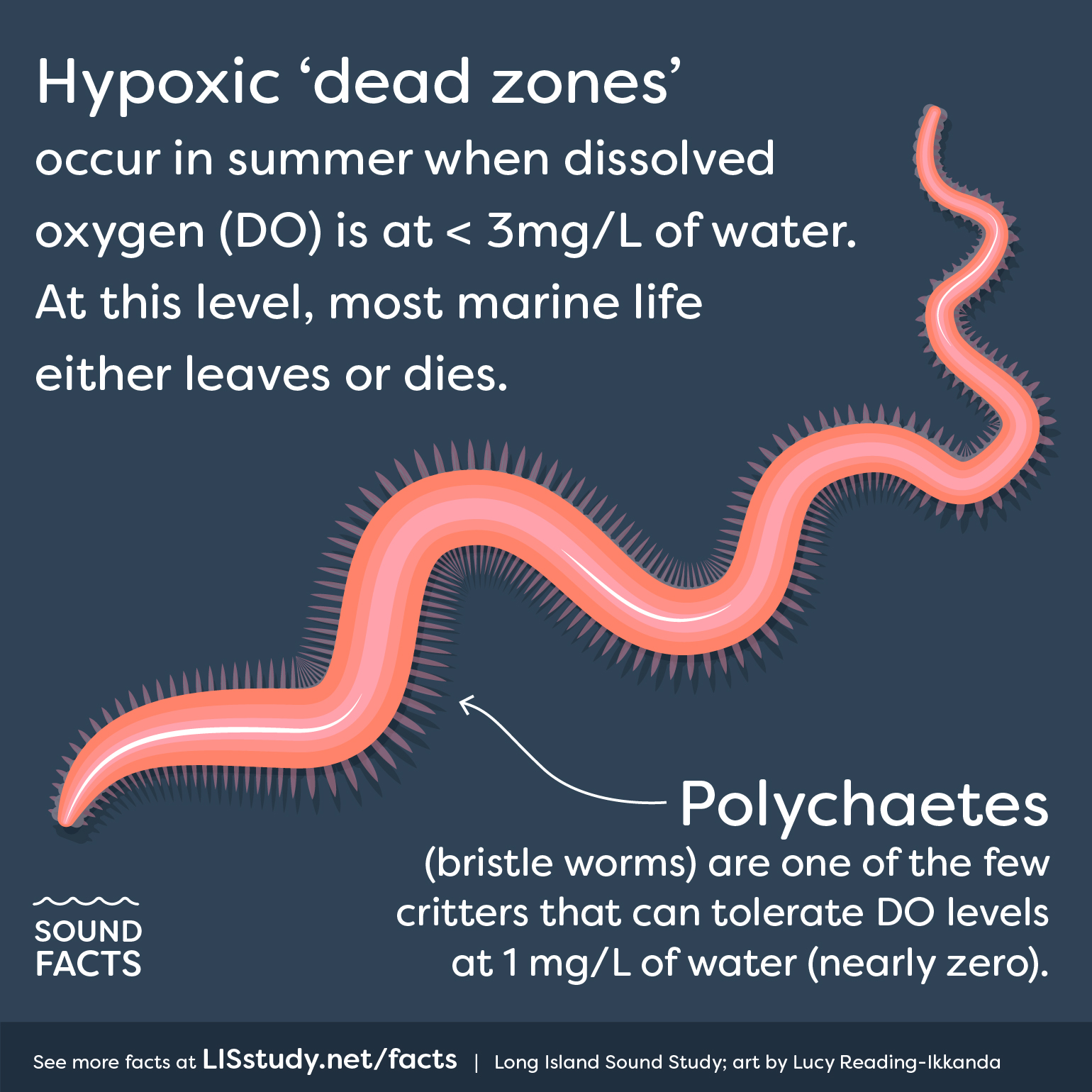
Of course, polychaetes can tolerate low dissolved oxygen levels. After all, they can live in oxygen-depleted areas in the mud and sand of the tidal flats. These marine-based worms, according to Living Treasures: The Plants and Animals of Long Island Sound, “work the sediments, bringing nutrients to the mud or sand surface layer and allowing oxygen to penetrate deeper in the mud or sand. They feed on decaying matter, alga and bacteria, and they themselves are prey for larger animals, such as crabs.” They do breathe in oxygen through their skin or gills.
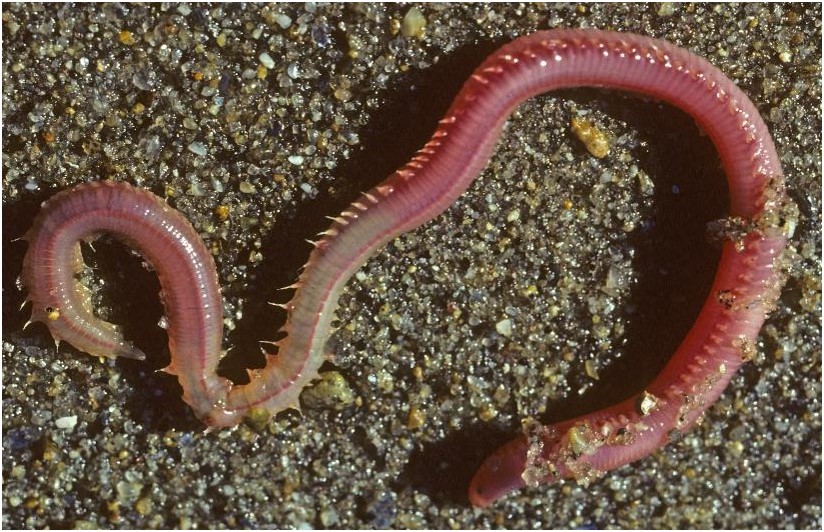
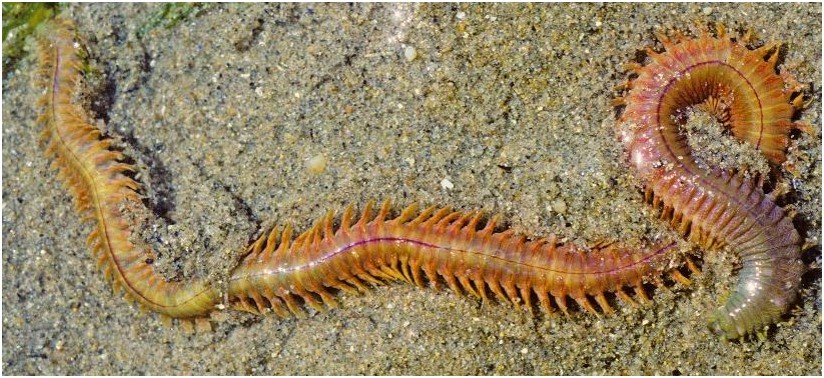
Facts about Polychaetes
- Polychaetes, or bristle worms, are marine annelids, worms that have segmented, ringlike bodies. They are related to earthworms.
- Chaeta is derived from the Greek word chaite, meaning growth of hair or flowing locks. So polychaete means many hairs or many bristles, a reference to the bristles on the worms’ ringlike bodies.
- According to ScienceDirect, there are more than 15,000 described species of polychaetes. Marine Animals of Southern New England and New York, a guide to animals in Long Island Sound, identifies more than 80 species in the Sound. It’s not a comprehensive list, however. The guide did not include rare species.
- Polychaetes can tolerate levels of dissolved oxygen of 1 mg per liter of water, according to the Chesapeake Bay Program. In Long Island Sound, anoxic conditions, in which the environment has extremely little or no oxygen, begin at levels of less than 1 mg/L
- In 1994, the Connecticut Department of Energy and Environmental Protection conducted research to investigate the lowest levels of dissolved oxygen that 16 common fish in Long Island Sound can tolerate. The fish that tolerated the most deoxygenated waters were butterfish with a tolerance of dissolved oxygen levels of <1.3 mg per liter of water followed by Atlantic herring with DO levels of 1.4 mg per liter.
Learn More
- Find out more about Bristle Worms on the web in the Chesapeake Bay Program field guide.
- In “14 Fun Facts About Marine Bristle Worms,” a Smithsonian Magazine writer offers interest tidbits about bristle worms. Did you know there is a polychaete that can survive without oxygen for up to 96 hours?
- In “Pops of Polychaete Color,” a Smithsonian Magazine contributor shares spectacular color photos of bristle worms.
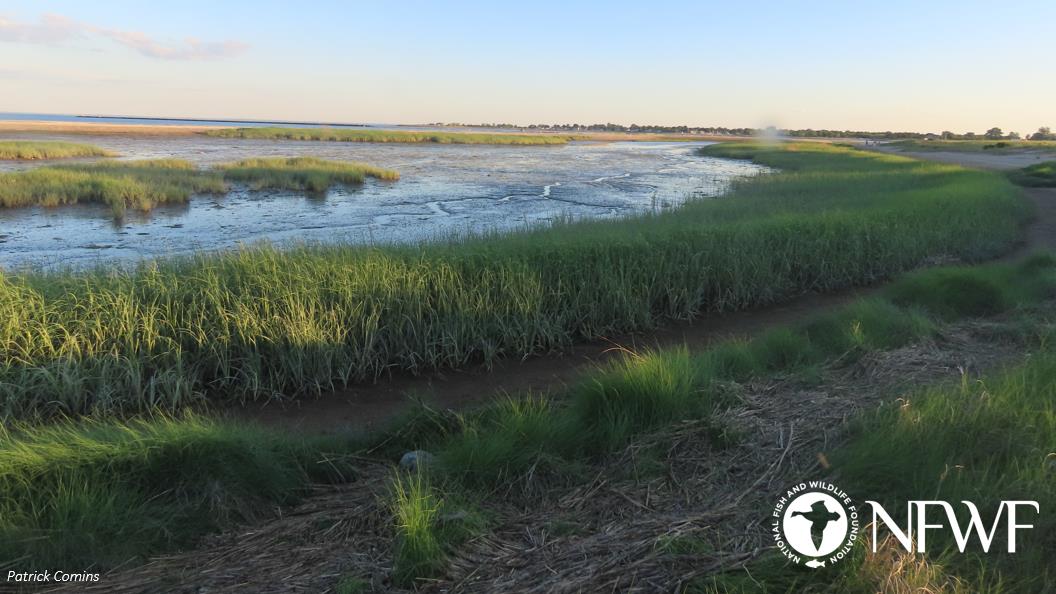
It’s not too early for organizations and municipalities to start planning for the 2023 Long Island Sound Futures Fund grant program. The National Fish and Wildlife Foundation is expecting to announce the request for proposals in March. Meanwhile, NFWF has just announced a series of workshops in each of the Long Island Sound watershed’s five states to learn about how to apply for a grant through the RFP process.
Register now or save the date for a workshop near you. If you are registering identify which workshop you want to attend:
| Workshop Dates** | Locations | Times | Register |
| Jan. 25, 2023 | Hartford, VT | 9am-12:30pm | VT registration |
| March 2, 2023 | MA Webinar for agriculture | 10am-noon | email Throwe Environmental |
| March 2, 2023 | MA Webinar for municipalities | 1pm-2:30pm | email Throwe Environmental |
| March 23, 2023 | Pembroke, NH | 9 am-12noon | email Throwe Environmental |
| March 27, 2023 | Middletown, CT | 9:30 am-1pm | email Throwe Environmental |
| March 28, 2023 | Groton, CT | 9:30am-11am | email NFWF |
| March 28, 2023 | New Haven, CT | 2pm-3:30pm | email NFWF |
| March 29, 2023 | Bridgeport, CT | 9:30am-11am | email NFWF |
| April 11, 2023 | Huntington, NY | 9:30-11am | email NFWF |
| April 18, 2023 | Bronx, NY | 9:30-11am | email NFWF |
| April 18, 2023 | New Rochelle, NY | 2pm-3:30pm | email NFWF |
Grants for the 2023 Futures Fund grant program will range from $50,000 to $1.5 million, with a potential of more than $10 million in grants to be distributed. The availability of federal funds estimated in the solicitation will be contingent upon the federal appropriations process. Funding decisions will be made based on level of funding and timing of when it is received by NFWF.
Habitat restoration planning or implementation projects are eligible for grants in the Long Island Sound Study coastal zone of Connecticut and New York. Resilience, education, water quality and fish passage projects are eligible for grants in the Long Island Sound Study boundary in Connecticut and New York. And, nitrogen prevention or reduction planning or implementation projects are eligible for grants in the Long Island Sound boundary in Connecticut, Massachusetts, New Hampshire, New York, and Vermont.
In addition to attending a workshop, NFWF is also encouraging potential applicants to share a project idea now and get feedback. Fill out this form and send to LISFF23@nfwf.org. The deadline to submit project ideas is April 14, 2023.
The Long Island Sound Study is receiving $106 million through the federal Bipartisan Infrastructure Law over five years (2022-2026) to fund local initiatives to improve the environmental health, climate resiliency, and economic vitality of the Sound in an equitable manner. The following fact sheets highlight the projects that are being funded from the first year of funding. The fact sheets open to an article on page 2. The front page contains general information about the BIL program and a photo of the project.
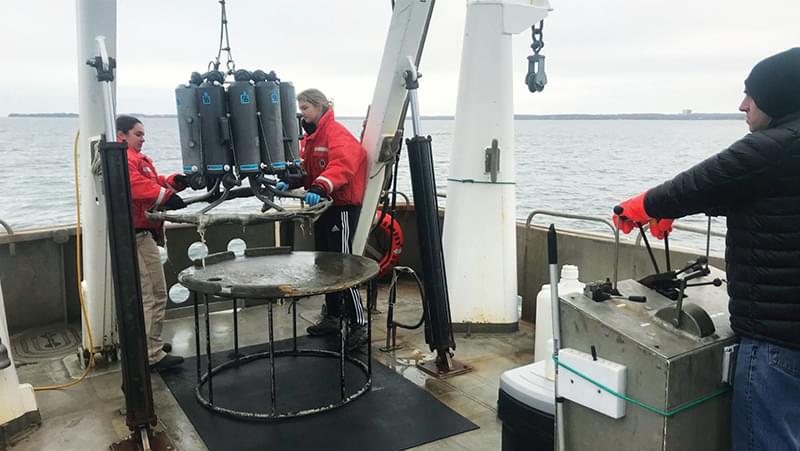
Overview of 2022 Projects Funded Through BIL Initiative
The fact sheet includes a brief description of the Bipartisan Infrastructure Law investment for Long Island Sound and summaries of the projects funded in year one under the categories of Clean Waters, Healthy Ecosystems, and Strong Communities.
Download Fact Sheet »
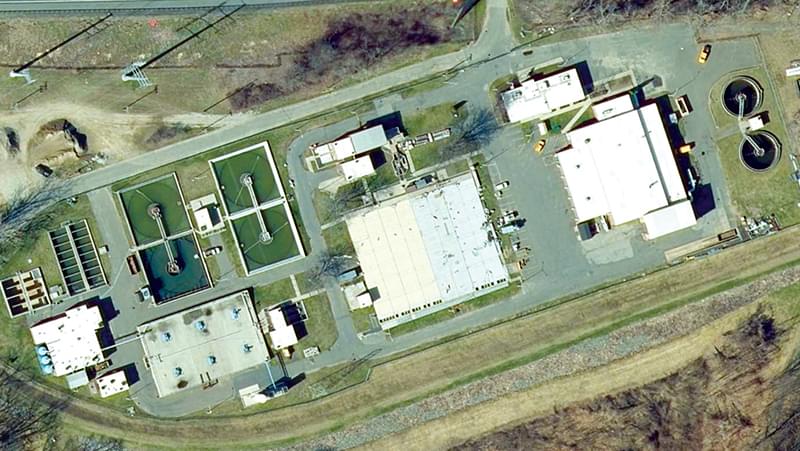
City of Chicopee Wastewater Treatment Plant Upgrade
MassDEP will provide financial assistance to the city of Chicopee to upgrade its wastewater treatment plant. The facility, located on the Connecticut River, will achieve advanced nitrogen removal levels, reducing nitrogen pollution flowing from the river to Long Island Sound.
Download Fact Sheet »
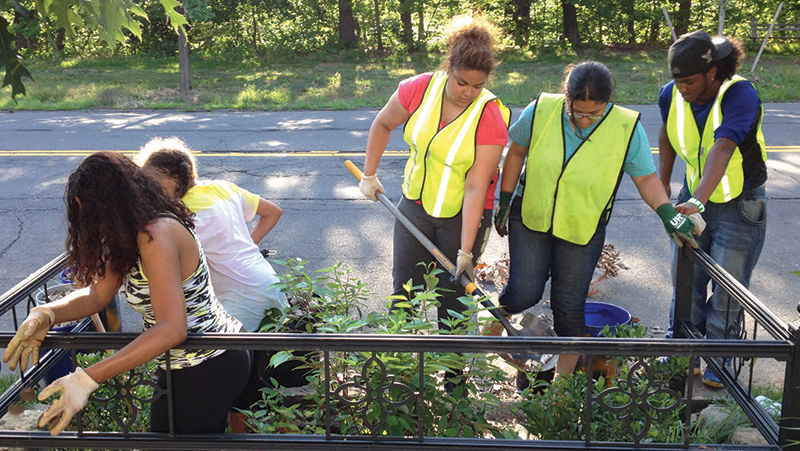
Long Island Sound Community Impact Fund
In 2022, the Long Island Sound Study (LISS) launched a program to support community resilience in the Long Island Sound (LIS) region.
Download Fact Sheet »
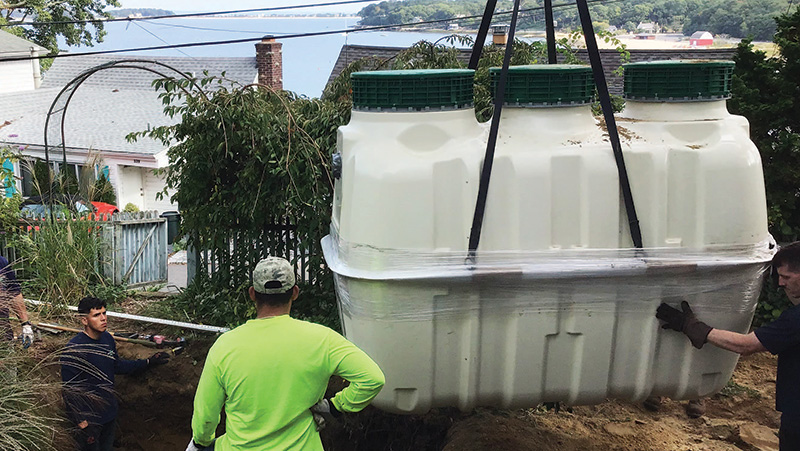
New Septic Systems to Reduce Nitrogen Pollution into Long Island Sound
The New York State Department of Environmental
Conservation has received an initial grant of $2.25 million through the federal Bipartisan Infrastructure Law to advance Suffolk and Nassau counties’ septic replacement programs.
Download Fact Sheet »
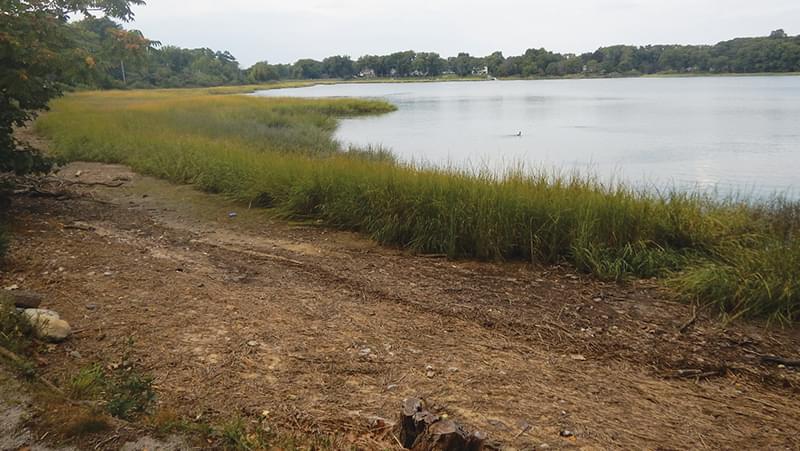
Open Space Acquisitions
NYSDEC will acquire three new properties within the Long Island Sound watershed, expanding existing habitat conservation areas. Conserving these properties will improve coastal water quality and preserve habitat for wildlife.
Download Fact Sheet »
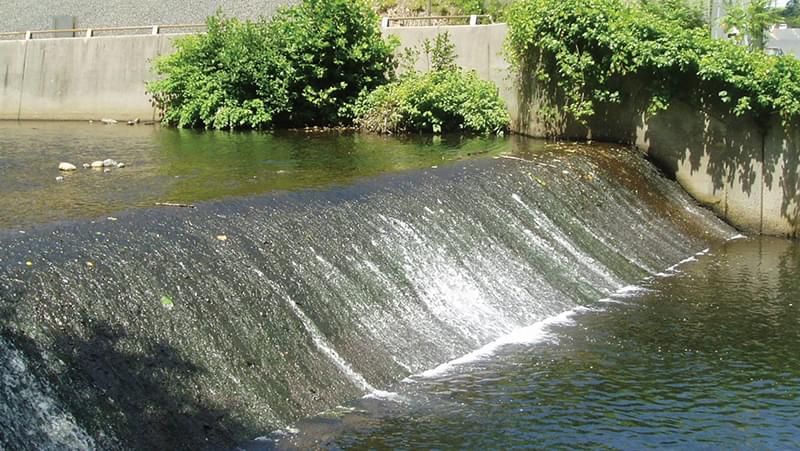
Middle Street Dam Removal
CT DEEP will help to remove a defunct dam from the Pequabuck River located in Bristol, CT, restoring 8.5 miles of free-flowing river for fish passage and removing contaminated sediment that has accumulated behind the dam.
Download Fact Sheet »
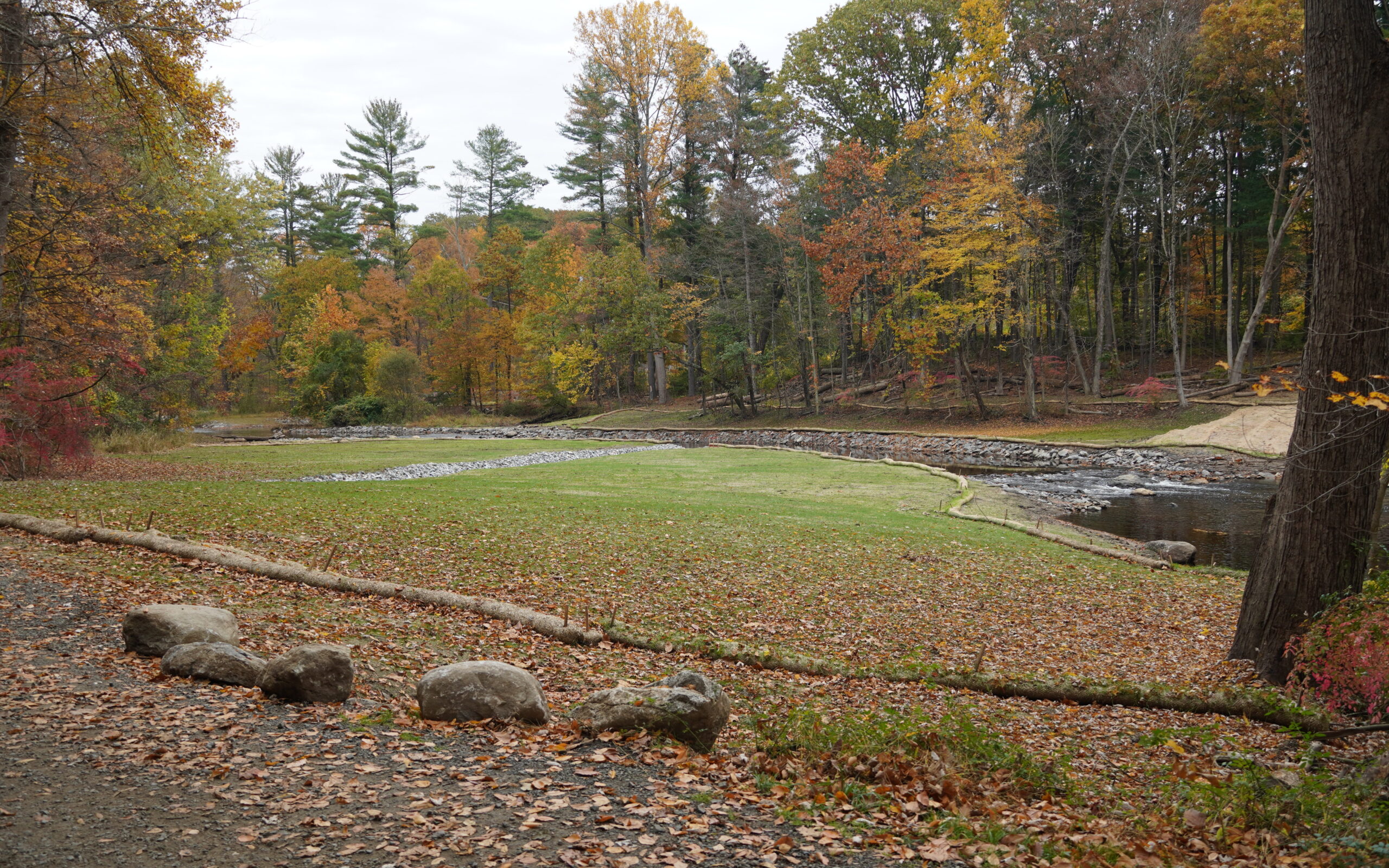
Strong Pond Dam Removal
CT DEEP completed the removal of Strong Pond Dam in Wilton, CT, on September 11, 2023, opening an additional 10 miles of river habitat for migratory fish swimming from Long Island Sound.
Download Fact Sheet »
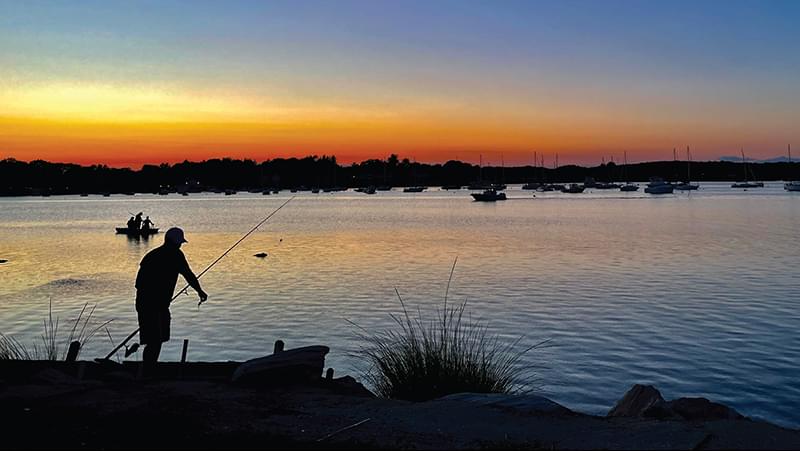
Increasing Access to the Connecticut Angler Survey
CT DEEP will address data gaps in Connecticut’s annual angler survey caused by language barriers between anglers and surveyors. A part-time staff member was on-boarded to assist with materials translation and CT DEEP is distributing a multilingual flyer to recruit translators needed to speak to all anglers in the Sound.
Download Fact Sheet »
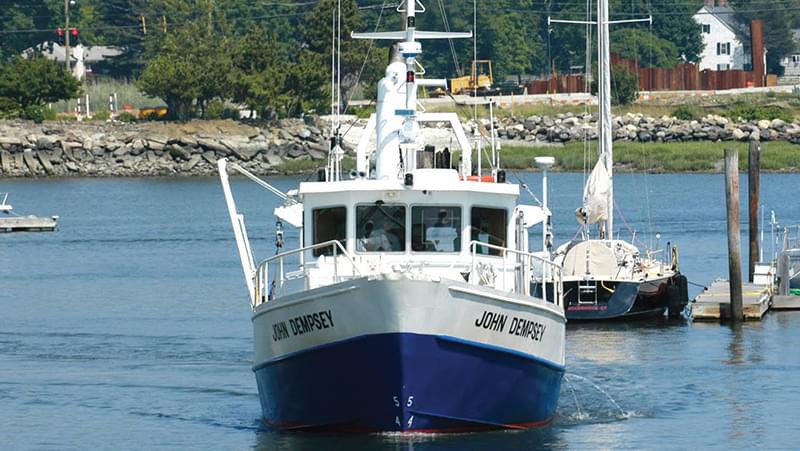
Purchasing a New Research Vessel to Improve and Expand Research and Monitoring
CT DEEP will acquire a new research vessel to use alongside the RV John Dempsey. The vessel will collect data for the monthly water quality survey and will improve the efficiency and capacity to conduct research in Long Island Sound.
Download Fact Sheet »
Contact:
Kristen Peterson, for National Fish and Wildlife Foundation (NFWF), 410-353-3582, kpeterson@thehatchergroup.com
Stephen McBay, US EPA Region 2, 212-637-3672, McBay.Stephen@epa.gov
Mikayla Rumph, US EPA Region 1 (New England), 617-918-1016, rumph.mikayla@epa.gov
NEW YORK (December 12, 2022) – Today, top federal and state environmental agencies and officials from New England and New York, including the National Fish and Wildlife Foundation (NFWF) and the US Fish and Wildlife Service (FWS), announced 41 grants totaling $10.3 million to organizations and local governments to improve the environment of Long Island Sound. The grants are matched by $5.8 million from the grantees themselves, resulting in $16.1 million combined total funding for conservation projects in New York, Connecticut, Massachusetts, New Hampshire, and Vermont.
In all, these Long Island Sound Futures Fund (Futures Fund) 2022 grants will reach 319,000 people through environmental education programs. Water quality improvement projects will prevent 5.3 million gallons of polluted stormwater from flowing into Long Island Sound waters. The projects will also remove 8,000 pounds of marine debris from the sound shorelines and enhance 215 acres of habitat vital for fish and wildlife. Funding for the grant program comes from the EPA as part of the Long Island Sound Study (LISS), from the FWS and NFWF. Salesforce, Zoetis, Avangrid Foundation and Covanta have provided other funding.
“The Long Island Sound is a critical natural resource that supports a diverse ecosystem and provides advantages to millions of people along its coast,” said EPA Region 2 Regional Administrator Lisa F. Garcia. “EPA’s ongoing investments in community-based programs and water quality improvements immediately benefit the Sound, reducing nitrogen runoff and helping restore miles of river habitat. In addition, the Long Island Sound will benefit from a $106 million investment under the Bipartisan Infrastructure Law. These awards and that financing provide a unique opportunity to make significant environmental improvements that will last generations.”
“Long Island Sound is an essential ecosystem that supports communities, economies, and habitats across the region and this year’s recipients showcase the commitment that watershed communities have to restoring the Sound,” said EPA New England Regional Administrator David Cash. “We are proud to support locally driven, innovative projects that will protect Long Island Sound. These projects are designed to improve water quality, support environmental justice initiatives, enhance community resilience to storms and floods, and provide public access in an urban coastal community of Long Island Sound.”
The LISS initiated the Futures Fund in 2005 through EPA’s Long Island Sound Office and NFWF. The grant program has a strong history of making tangible environmental improvements by supporting people and communities who value the sound and take a direct role in its future. Since its inception, the Futures Fund has invested $42 million in 570 projects. The program has generated an additional $54 million in grantee match for a total conservation impact of $97 million. Projects have opened 119 river miles for fish, restored 811 acres of wildlife habitat, reduced 206 million gallons of stormwater pollution, and engaged more than 5 million people in the protection and restoration of the Sound.
“Estuaries and their surrounding lands and waters represent some of the most productive ecosystems in the world,” said Jeff Trandahl, Executive Director and CEO of NFWF. “The funding awarded today embodies our continued commitment, together with our public and private partners, to improve the sound by fostering environmental stewardship and public awareness and education, restoring habitat for fish and wildlife, preventing pollution, and enhancing the resilience of coastal communities.”
“In this time of climate change, it is more important than ever to empower local communities to increase the resilience of their rivers and coastal habitats for the safety of their citizens and health of fish and wildlife,” said Kyla Hastie, Acting Northeast Regional Director for the U.S. Fish and Wildlife Service. “The projects funded today will reduce flooding and storm damage, boost water quality, and increase educational and recreational opportunities, particularly for historically disadvantaged communities. At the same time, migratory fish will regain access to spawning grounds, and wildlife at risk from rising seas, like saltmarsh sparrow, will benefit.”
“The Long Island Sound is a cherished natural resource in New York State, providing important nursery habitat for marine life, migratory birds, and wildlife, while supporting diverse economic, recreational, and environmental benefits to local residents,” said New York State Department of Environmental Conservation Commissioner Basil Seggos. “DEC is proud to partner with the Long Island Sound Futures Fund to advance initiatives that support critical habitat restoration, water quality improvement, and community outreach. We congratulate all the awardees and look forward to the continued progress towards the implementation of these projects.”
“Long Island Sound is such a valuable resource, and the projects funded by the Long Island Sound Futures Fund will do so much to help the Sound, the communities that live near it, and the rivers that flow into it, thrive,” said Katie Dykes, Commissioner, Connecticut Department of Energy and Environmental Protection. “We are honored to celebrate the awarding of over $4.3 million in grants to 19 recipients in Connecticut, which also leverages over $1.9 million in local funding. These important and forward-thinking projects range from reducing nitrogen pollution and removing barriers to fish passage to improving the resilience of our coastal communities and providing pathways to conservation careers to young people from environmental justice communities. We are grateful to our federal partners for this impactful funding.”
A complete list of the 2022 Long Island Sound Futures Fund grants recipients is available here. See a list of quotes from elected officials and partners about today’s grant announcement here. To learn more, please visit the NFWF Long Island Sound Futures Fund website.
Long Island Sound is an estuary that provides economic and recreational benefits to millions of people while also providing habitat for more than 1,200 invertebrates, 170 species of fish and dozens of species of migratory birds. The grant projects contribute to a healthier Long Island Sound for everyone, from nearby area residents to those at the furthest reaches of the sound. All nine million people who live, work, and play in the watershed impacting the sound can benefit from and help build on the progress that has already been made.
About the National Fish and Wildlife Foundation
Chartered by Congress in 1984, the National Fish and Wildlife Foundation protects and restores the nation’s fish, wildlife, plants and habitats. Working with federal, corporate and individual partners, NFWF has funded more than 6,000 organizations and generated a conservation impact of $7.4 billion. Learn more at www.nfwf.org.
About the Long Island Sound Study
The Long Island Sound Study, developed under the EPA’s National Estuary Program, is a cooperative effort between the EPA and the states of Connecticut and New York to protect and restore the Sound and its ecosystem. To learn more about the Long Island Sound Study, visit www.longislandsoundstudy.net.
Follow EPA Region 2 on Twitter and visit our Facebook page. For more information about EPA Region 2, visit our website.
Contact: Sustainable and Resilient Communities Extension Professionals, LISresilience@gmail.com
Nov. 23, 2022 – With funding through the Long Island Sound Study (LISS), New York Sea Grant (NYSG) and Connecticut Sea Grant (CTSG) announce a funding opportunity open to municipalities and community organizations to facilitate the hiring of grant preparation and writing support to assist with the development of a grant application for sustainable and resilience focused projects that will impact a community(ies) within or partially within the Long Island Sound Coastal boundary (within Westchester, Nassau, Suffolk counties, Western Connecticut, and Eastern Connecticut). See Sustainable and Resilient Communities webpage for regions.
The intent of the Long Island Sound Resilience Grant Writing Assistance Program is to reduce staffing and capacity barriers that municipalities and community organizations may face when applying for competitive funding opportunities, help communities develop successful sustainable and resilience focused project grant applications, and for municipalities and community organizations to develop capacity for navigating the funding landscape.
Funding is to be awarded in a range of $5,000- $9,950 per application directly to the applicant’s selected grant writing support contractor on a cost reimbursable basis. Match will not be required.
Applications will be accepted on a rolling basis until all available funding is allocated.
For the Grant Program Announcement and to learn more:
See the NYSG website
See the CTSG website
For more information contact: LISresilience@gmail.com
Note: The initial news release described a September 2023 deadline to apply for grant writing assistance. The release was revised on Sept. 8, 2023 to indicate that the program will continue until all available funding is allocated.>
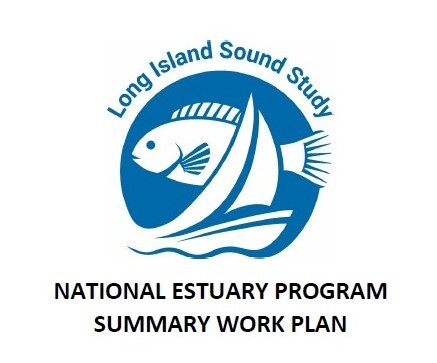
Each year the Long Island Sound Study develops a Work Plan as part of the National Estuary Program that outlines the work being done with EPA funds to help achieve the goals of the Study’s Comprehensive Conservation and Management Plan. The 2022 Work Plan describes the LISS activities planned with 2022 federal funding for Oct. 1, 2022 to Sept. 30, 2023 (fy23). It also highlights projects undertaken from Oct. 1, 2021 to Sept. 30, 2022 (fy22) with 2021 federal funds.
Download LISS FY2022 NEP Work Plan to read the document.
New Environmental Justice Grant: Long Island Sound Community Impact Fund
(Applications due Sept. 12, 2022) The Long Island Sound Study has announced a new Environmental Justice program focused on the Long Island Sound watershed. The Long Island Sound Community Impact Fund (LISCIF) will direct funds and technical assistance to communities experiencing or affected by adverse and disproportionate environmental and human health risks or harms. EPA is seeking proposals from organizations to partner on launching the LISCIF and will provide up to $5 million for this program with Bipartisan Infrastructure Law funds. Applications are being accepted through Sept. 12, 2022. Learn more at grants.gov.
By Kristen Jabanoski
Dr. Penny Vlahos, Professor of Marine Sciences at University of Connecticut, set out with a bold agenda: develop a systematic approach to understanding the chemistry of Long Island Sound. Major chemical cycles in the Sound were not well understood when she started out, including the carbon and nitrogen cycles. Understanding these cycles is critical to managing the ecosystem and adapting to a rapidly changing climate.


“In terms of biogeochemistry, Long Island Sound was blank. It wasn’t really on the map of the East Coast,” Vlahos explained.
RESPIRE Project
Enter the Long Island Sound Respire project, funded by a $398,000 grant from the Long Island Sound Study, which supported Vlahos and doctoral student Lauren Barrett sampling the Sound monthly from June 2019 to October 2021 to gather key information not previously collected in water quality sampling.
Their goal was to understand how oxygen moves through the Sound’s water column, along with key nutrients such as carbon and nitrogen, by sampling ten sites across the Sound aboard Connecticut Department of Energy and Environmental Protection (CT DEEP)’s research vessel John Dempsey. With funding from the Long Island Sound Study, CT DEEP has been monitoring the Sound’s water quality for New York as well as Connecticut since 1991. Long Island Sound Respire enhanced CT DEEP’s existing long term water monitoring program, and has led to several new initiatives which will provide more detailed data on nutrients and acidification in the Sound (more information).
The COVID pandemic briefly interrupted water sampling in spring 2020. Monthly research cruises came to a halt in April and May, but the value of close cooperation with CT DEEP became clear when they resumed over the summer. Although COVID protocols prevented CT DEEP from hosting scientists from other institutions aboard the Dempsey, part of the sampling continued because the CT DEEP staff scientists went out of their way to collect samples that the UConn team needed for nutrient and carbonate chemistry analysis.
Environmental analyst Matt Lyman of CT DEEP explained, “Dr. Vlahos’ Respire Project provides important information supporting CT DEEP’s commitment to protect and improve the health of Long Island Sound. While the sample collection for this project added to an already busy sampling schedule, it was certainly worth it to ensure a continuous data set over the course of the project.”
Vlahos also works closely on the project with UConn physical oceanographer and modeler Dr. Michael Whitney and UConn biological oceanographer Dr. Jamie Vaudrey. Whitney built a dynamic model for Long Island Sound, and embedded chemistry information from Vlahos’ work into that model. Vaudrey provides valuable guidance on respiration and primary productivity measurements.
Vlahos and her team confirmed and characterized a strong connection between two environmental problems often considered separately – excess nitrogen entering the Sound and coastal acidification.
Nitrogen is a nutrient that enters the Sound from many different sources, including agriculture, fertilizer, septic systems, and treated wastewater. In excess it fuels the growth of algae, which can affect water quality and human health. When the short-lived algal cells decompose, the oxygen in the water is often depleted, leading to fish kills and ecosystem damage.
While ocean acidification is a global issue caused by the ocean absorbing the extra carbon dioxide in the atmosphere from burning fossil fuels, coastal acidification can also be fueled by excess nutrients. The pH of seawater can decrease locally when algal overgrowth happens. This is because the bacteria breaking down the algal cells both use up oxygen and release carbon dioxide into the water.
Vlahos hopes to permanently add carbonate chemistry measurements to the Long Island Sound water monitoring program to better track acidification.
Major reductions in nitrogen output into Long Island Sound are a noteworthy water quality accomplishment since the introduction of Total Maximum Daily Load (TMDL) to reduce nitrogen in 2000. An estimated 50 million pounds of nitrogen are kept out of the Sound every year due to wastewater treatment plant upgrades in New York and Connecticut.
These reductions have led to improved oxygen levels in the Sound, and reduced the geographic extent of low oxygen during the summer months by more than half compared with the 1990s. This means better water quality and improved conditions for fish, other marine animals, and people.
What Does Climate Change Mean for Water Quality in the Sound?
Vlahos, who was recently elected Connecticut co-chair of the Long Island Sound Science and Technical Advisory Committee, notes that the outlook for climate change in our region means that we can’t get complacent when it comes to water quality. Even if nutrient pollution in the Sound holds steady, the warming Sound will have less capacity to hold dissolved gasses including oxygen – similar to the way a warm soda goes flat more quickly. This means that at the same level of nitrogen input, a warmer Sound will be more prone to low oxygen. Connecticut and New York will need further reductions in nitrogen just to maintain today’s water quality improvements into the future. Vlahos and Whitney published these findings in Environmental Science and Technology last year.
For the RESPIRE project, the right technology was available at just the right time. Vlahos and her research group brought in a newly-developed instrument called the Contros HydroFIA TA Analyzer to measure alkalinity, which they can also use to monitor coastal acidification. This cutting-edge instrument was tested and went on the market just a few years before the study began.

Because there was little previous data on inorganic carbon in Long Island Sound, Vlahos and her graduate students started measuring alkalinity, the more familiar pH, the partial pressure of carbon dioxide, and dissolved inorganic carbon on monthly cruises with CT DEEP. These measurements characterize total inorganic carbon, which was a critical gap in the carbon budget for the Sound.
They used these carbonate parameters to create a monthly map of a measurement called omega in Long Island Sound. Scientists use omega to track ocean and coastal acidification. Omega is the saturation state of calcium carbonate, which is important because carbonate ions are the building blocks that marine animals including shellfish use to make their shells. An omega value greater than one indicates supersaturation, whereas values less than one are a warning sign of undersaturation, a condition favoring the dissolution of calcium carbonate shells.
The team discovered that a large swath of central Long Island Sound has an omega value below one, which is considered corrosive to shellfish and other calcifying animals, during July and August. This low omega area mirrors the low oxygen zone during the summer. As a result, Vlahos suggests that omega values could be used in the future to set new Total Maximum Daily Loads for the Sound, rather than relying exclusively on nitrogen values to set these limits.
What can concerned coastal and inland residents do to protect water quality gains in the warming Sound? Vlahos suggests reducing your household’s contribution to nutrient runoff by using less fertilizer for lawns and gardens, along with replacing septic systems with new nitrogen removal systems. In addition to reducing household nitrogen input, communities can support shellfish restoration initiatives, as filter-feeding shellfish take up significant amounts of nitrogen from the Sound through the algae they eat.
Alkalinity in Long Island Sound Embayments (ALISE) project
While the Respire project aims to understand the chemistry of the Sound as a whole, Vlahos’ recently-funded Alkalinity in Long Island Sound Embayments (ALISE) project aims to understand the carbonate chemistry of the embayment areas where most shellfish aquaculture is located. These areas could be particularly at risk from coastal acidification; while water quality issues tend to be diluted in the main part of the Sound, they may be exacerbated in the more closed off embayments. Her long term goal is to create omega maps for coastal Connecticut and New York, which would allow shellfish growers to choose where to farm wisely.
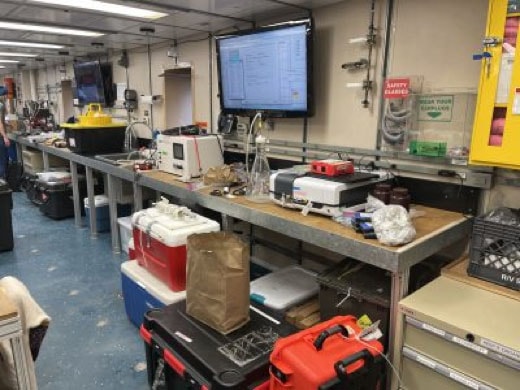
“The embayment program will help the shellfish industry know which areas are good for growing shellfish, which are more vulnerable to acidification, and why,” Vlahos explained.
“Estuaries tend to have larger variations in carbonate chemistry, and yet most ocean acidification data comes from the open ocean,” said Dr. Vlahos.
Connections to the Arctic
Vlahos and her graduate students have also been conducting research in the Arctic under a project funded by the National Science Foundation to learn about the changing water chemistry of ice melt zones, seasonal pools of freshwater that now freeze and thaw annually. The importance of understanding these areas is growing: as the permanent ice cap melts in a warming Arctic, in just a few decades summers may be ice-free. This could change the role of the Arctic in carbon sequestration, further affecting the global climate.
After a two week pre-cruise COVID isolation period in Alaska, the team collected water samples aboard the R/V Sikuliaq from the Bering sea to the Chukchi Sea between May 20 to June 14, 2021. At several sampling stations on the ice, polar bear activity was a concern and spotters on the bridge of the ship watched keenly to ensure they didn’t get too close to the researchers.
Although the Arctic Ocean is more than 5,000 miles from Long Island Sound, it is similar to the Sound in one important way. It’s an area where open ocean measurements don’t cut it in terms of understanding the chemistry, because unique local dynamics are at play.
The Arctic research will continue this spring, but thus far the team has discovered that there are differences in carbonate chemistry and productivity, or the amount and diversity of life that those areas can support, compared with the open ocean.

“In the Arctic, the train has left the station. We can’t reverse the changes we’re seeing, but we can inform global climate models to make them more accurate,” Dr. Vlahos reflected, “However, in Long Island Sound, we have a chance to inform coastal residents and actually act to reduce our nutrient output, which makes a difference.”
Kristen Jabanoski is a science communicator who writes frequently about fisheries, aquaculture, and environmental research on Long Island Sound.
5 LISS-Funded Coastal Acidification Projects Building on the Respire Project
CT DEEP monthly water quality sampling project including Total Alkalinity and Dissolved Inorganic Carbon ($94,532)
Monthly nutrient water quality surveys are conducted throughout the year to document processes relevant to hypoxia and nutrient dynamics. This proposal will add coastal acidification parameters (Total Alkalinity (TA) and Dissolved Inorganic Carbon (DIC)) to the current monitoring program. This project will develop and maintain a long-term coastal acidification monitoring program in the off-shore waters of Long Island Sound at a subset of stations currently monitored by CT DEEP to better understand future impacts in relation to eutrophication, hypoxia, and climate change. Carbonate chemistry samples will be analyzed by the Environmental Chemistry & Geochemistry Lab of Dr. Penny Vlahos in the Department of Marine Sciences at the University of Connecticut. (back to top)
Interstate Environmental Commission – water quality monitoring in the western Sound to complement CT DEEP’s monitoring ($28,485)
In 2022-2023, the Interstate Environmental Commission will incorporate additional monitoring and sampling to assess coastal acidification in the western Long Island Sound, enabling a more comprehensive assessment of both the extent of hypoxia and the variation of water quality parameters relevant to hypoxia throughout Long Island Sound. (back to top)
USGS project focused on alkalinity and other variables in LIS embayments ($352,000)
USGS will establish and lead a long-term monitoring network to provide data for calculating aragonite saturation and increase spatial and temporal coverage for embayment monitoring across Long Island Sound. (back to top)
Save the Sound LIS embayments project ($249,705)
Save the Sound will leverage the network of community science monitoring groups in the Unified Water Study for this monitoring effort, which will enable widespread LIS embayment coverage to complement the monitoring being considered for the open waters and other portions of the Sound. This will add coastal acidification parameters—Total Alkalinity (TA), pH, Dissolved Organic Carbon (DOC), and Dissolved Inorganic Carbon (DIC)—to the Unified Water Study for the 2023 monitoring season. It will also fund creation of meaningful and relatable communications on the importance of coastal acidification monitoring to laypeople around the Sound. (back to top)
UCONN’s real time monitoring network (LISICOS), adding pH sensors to buoys ($34,069)
The LISICOS buoy array has included pH and pCO2 sensors in the western Sound since 2018 and these data have shown that pH can change from 8 to 7.2 over the summer (May to September) but changes of 0.2 are possible in a single day. To properly interpret the results of ship sampling surveys, we will purchase a pair of sensors to measure pH and pCO2 at 15-minute intervals at mid-depth (~65 feet) in central LIS by mounting them on the mooring cable of the Central Long Island Sound buoy. The deployments will be integrated into NOAA-funded buoy deployments. In addition to the open-access data record, the final deliverable will be a data report and recommendations on how to sustain a long-term monitoring program. (back to top)
If you think your home might be impacted by coastal erosion, you can learn more by attending a virtual public presentation being held on June 9, with support from Suffolk County Legislator Sarah Anker, New York Sea Grant, and the Long Island Sound Study. The meeting is open to all, but is geared to residents of the North Shore in Suffolk County who are concerned about coastal bluff and shoreline erosion affecting their properties. Meeting will take place via Zoom. Register in advance here.
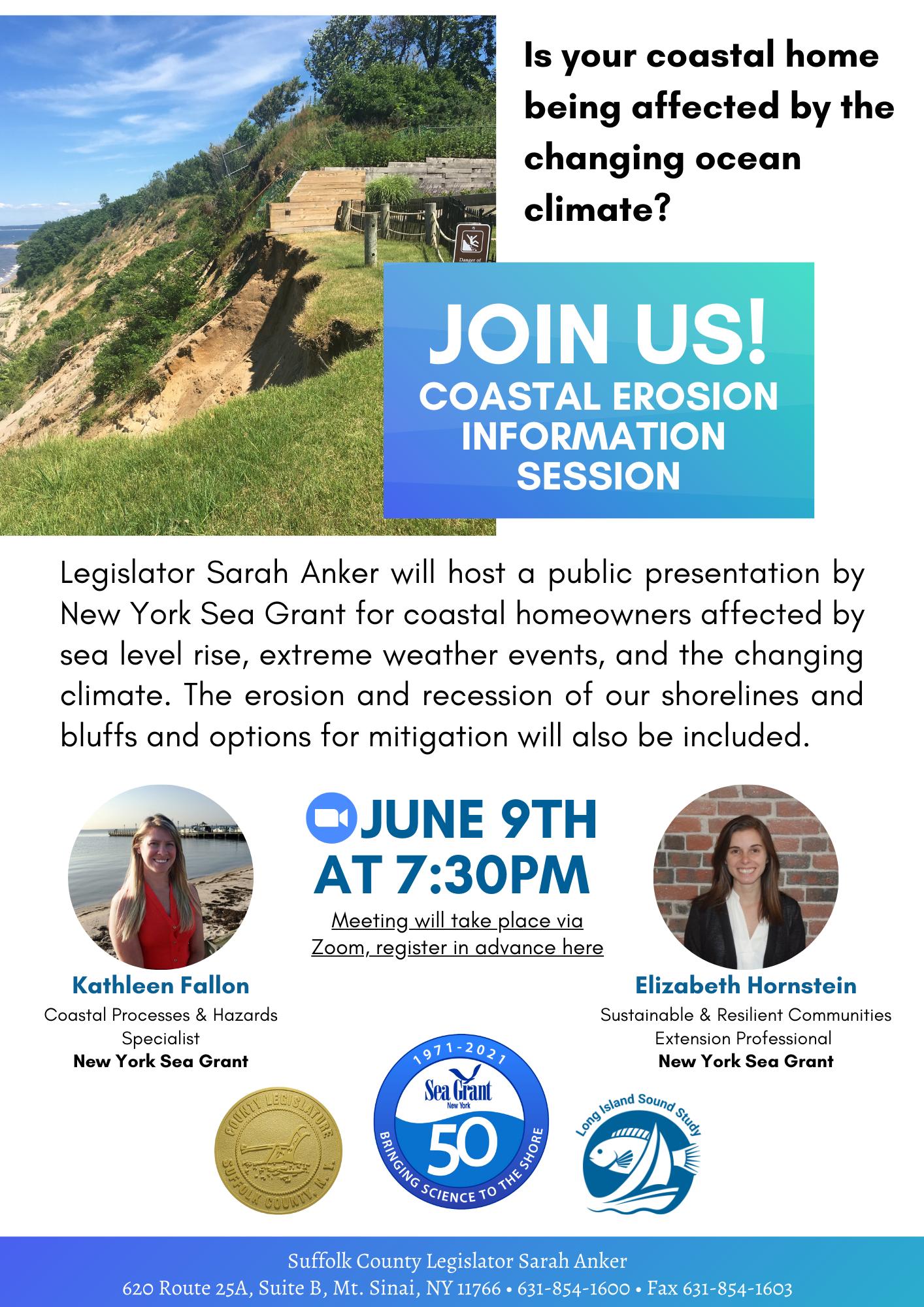
For more information, contact: Elizabeth Hornstein, LISS Sustainable and Resilient Communities Extension Professional at elizabeth.hornstein@cornell.edu, or 631-632-3093.
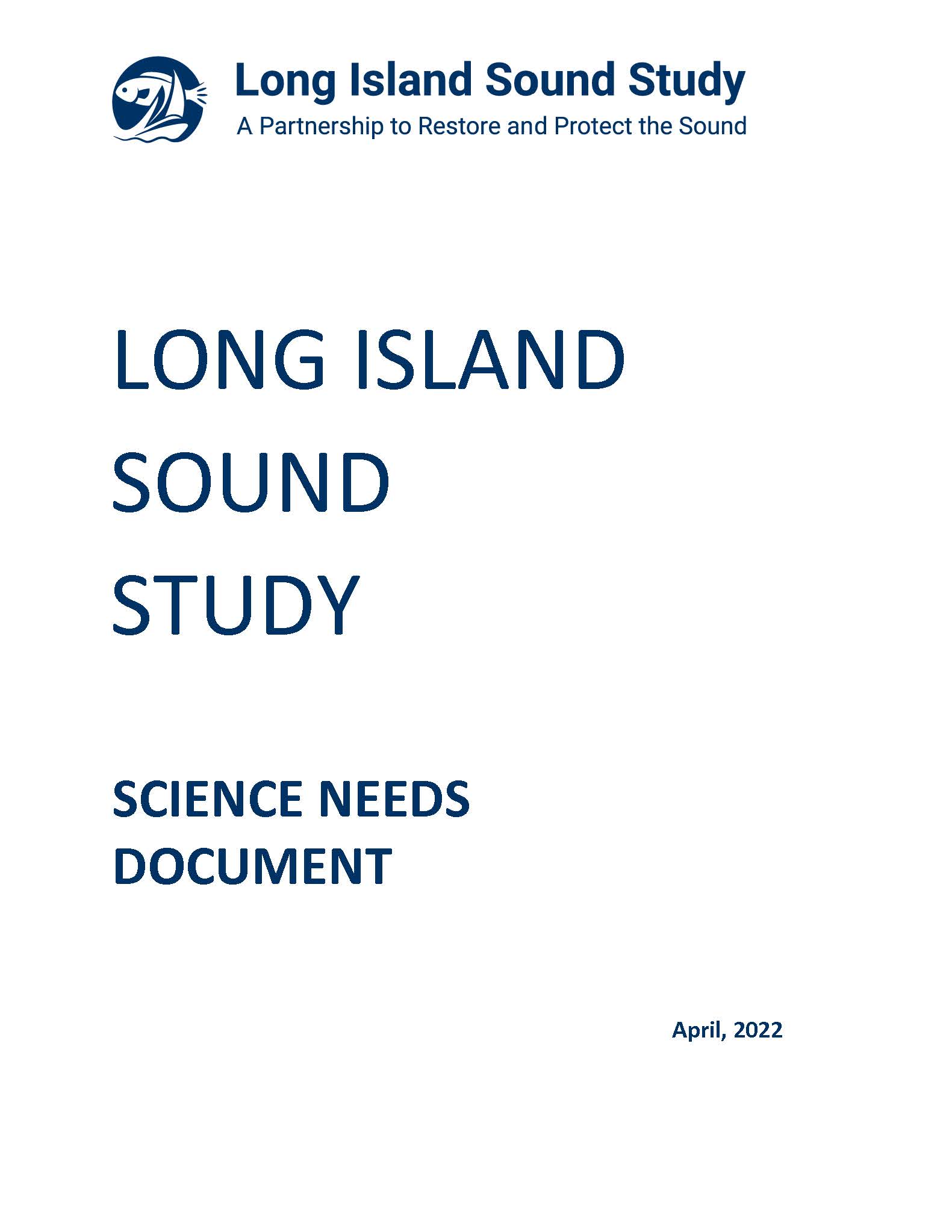
The Science Needs Document is a comprehensive summary of the science support needed to meet the management goals of the Long Island Sound Study (LISS). It has been developed based on the input from a diverse array of LISS partners. It is structured around the Themes and Ecosystem Targets of the 2015 Comprehensive Conservation and Management Plan (CCMP). This is a broad reference document that is meant to highlight needs but not to specify the top priorities and is subject to continuous revision to incorporate new information.



